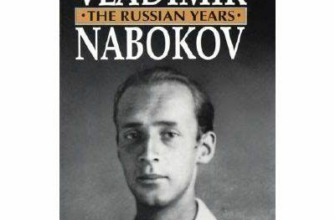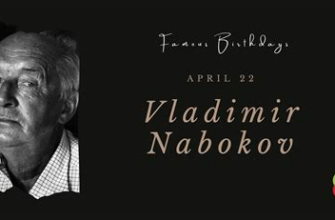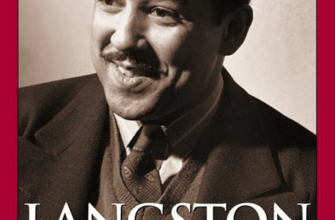In the realm of literature, there are certain individuals whose artistry transcends boundaries and captivates the hearts and minds of readers across generations. One such luminary figure is Robert Browning. His profound impact on the world of poetry is undeniable, leaving an indelible mark that continues to inspire and provoke thought. Delve into the enchanting tale of a gifted poet who defied conventions, pushing the boundaries of creativity like never before.
Through the lens of Browning's works, one gains a glimpse into the depths of the human experience. His eloquent words, imbued with passion and fervor, serve as a conduit for exploring the intricate tapestry of emotions that define our very existence. With each carefully crafted line, he invites us to question the essence of love, to ponder the complexities of the human psyche, and to reflect upon the eternal struggle between good and evil.
The poetic genius of Browning lies not only in his unparalleled ability to articulate profound emotions, but also in his unique style that seamlessly blends traditional forms with his own innovative techniques. His use of vivid imagery transports readers to vibrant landscapes and allows them to experience the world through his poetic gaze. With a masterful command of language, Browning weaves intricate narratives that tease and tantalize, leaving his audience in awe of his unparalleled craftsmanship.
Delving deeper into the life of this literary luminary reveals a man driven by an insatiable thirst for knowledge and a burning desire to leave a lasting impact on the world. Browning's relentless pursuit of excellence led him to forge his own path, challenging conventional wisdom and pioneering new literary territory. His unyielding dedication to his craft serves as a testament to his unwavering commitment to artistic expression, ultimately leading him to become one of the most influential poets of his time.
Discovering the Life and Legacy of Robert Browning

In this section, we will delve into the captivating journey of a renowned poet, exploring the profound influence he left behind.
Embark on a voyage of discovery as we uncover the remarkable life of one of literature's most esteemed figures. Through a vivid depiction of his experiences, we will navigate the trials and triumphs that shaped his remarkable legacy.
- Explore the early years: Discover the formative years of this literary maestro, delving into the cultural and historical backdrop that contributed to his development as an artist.
- Unveil the inner world: Gain insights into the thoughts, emotions, and inspirations that drove Browning's artistic genius. Analyze the themes and motifs that permeated his works, unearthing the complexities beneath his captivating prose.
- Discover the love story: Follow the romantic tale that unfolded between Browning and his equally talented counterpart, Elizabeth Barrett Browning. Trace the evolution of their relationship and the profound impact it had on their creative output.
- Witness his impact: Uncover the enduring influence of Browning's works on subsequent generations of writers and artists. Examine the literary movements he inspired and the way his perspectives continue to reverberate in contemporary society.
- Reflect on his legacy: Contemplate the lasting imprint left by Browning and the rich tapestry of his artistic contributions. Engage in a thoughtful discussion on the relevance of his works in the present day and the lasting impact they have on the literary world.
Through an exploration of these captivating aspects, we will paint a comprehensive portrait of Robert Browning's life and the indelible mark he left on the world of literature. Join us on this enlightening journey into the depths of his brilliance and discover the profound legacy that continues to resonate today.
Early Life and Influences
In this section, we will explore the formative years and significant influences that shaped the development of the renowned poet and playwright, Robert Browning. Delving into his early experiences and the factors that sparked his artistic brilliance, we gain a deeper understanding of the roots of his creative expression.
Family and Upbringing Browning, born in 1812, hails from a family with a rich heritage and intellectual background. Growing up in the vibrant city of Camberwell, he was exposed to a stimulating environment that nurtured his curious mind from a young age. | Educational Journey As a bright student, Browning received a formal education that provided him with a solid foundation. He attended the University of London, where he engaged with various academic disciplines, including literature, philosophy, and languages, all of which played a significant role in shaping his artistic sensibilities. |
Literary Influences Browning's early exposure to a wide range of literary works deeply impacted his writing style and thematic choices. He voraciously consumed the works of prominent poets such as John Keats, Lord Byron, and William Wordsworth, whose artistry left an indelible mark on his own poetic voice. | Artistic Circles Immersing himself in the bustling artistic circles of London, Browning became acquainted with influential artists, writers, and intellectuals. Interactions and discussions within these circles not only greatly influenced his creative approach but also led to collaborations and partnerships that further enriched his artistic journey. |
Social and Historical Context The socio-political climate of nineteenth-century England had a profound impact on Browning's perspective and works. He lived during a time of significant societal changes, including the Industrial Revolution and the rise of the Victorian era, which influenced his exploration of themes related to love, morality, and societal norms. | Personal Experiences Browning's own life experiences, including his relationships, travels, and encounters, played a crucial role in shaping his artistic genius. The unique blend of personal joys, sorrows, and observations infused his works with a compelling authenticity and emotional depth that continue to resonate with readers to this day. |
This exploration of Robert Browning's early years and influences reveals the multifaceted factors that contributed to his emergence as a literary luminary. By examining the interplay between his personal experiences, intellectual pursuits, and societal context, we gain insight into the rich tapestry that laid the groundwork for his exceptional contributions to the world of literature.
A Literary Journey Begins: Browning's Early Works

Embark on an enlightening exploration of the early literary achievements of the renowned British poet and playwright, Robert Browning. Delve into the captivating world of his formative works that laid the foundation for his later creative brilliance. Journey through the transformative stages of Browning's writing as he evolves into a literary giant, leaving an indelible mark on the realm of poetry and drama.
- 1. Paving the Path to Promise
- 2. Bursting onto the Literary Scene
- 3. Unearthing the Authentic Self
- 4. The Confluence of Love and Art
- 5. A Glimpse into Browning's Mind
1. Paving the Path to Promise:
In this phase of Browning's early career, he navigated the terrain of literature, venturing beyond conventional boundaries. With an unyielding determination to explore new artistic avenues, Browning's works demonstrated a fearless experimentation with themes and styles. This period laid the groundwork for his later breakthroughs, setting the stage for his future triumphs.
2. Bursting onto the Literary Scene:
As Browning's literary prowess gained momentum, he burst onto the scene with works that captivated readers and critics alike. His unique blend of poetic techniques and insightful narratives breathed new life into the literary landscape. Browning's early works showcased his distinctive voice, offering a glimpse into the immense talent that would soon establish him as one of the great literary geniuses of his time.
3. Unearthing the Authentic Self:
During this phase, Browning delved deep into his own psyche, unraveling the complexities of human emotions and experiences. Through his early works, he explored the themes of identity, self-discovery, and the quest for personal truth. With a profound understanding of the human condition, Browning crafted poems that resonated with readers, inviting them to embark on their own introspective journeys.
4. The Confluence of Love and Art:
Love, in its various forms, became a recurring motif in Browning's early works. He delved into the depths of passion, devotion, and the intricate dynamics of relationships. Browning's exploration of love, both romantic and platonic, showcased his ability to portray the complexities of human connections through the power of his pen. His early works became a testament to the intertwining of love and art, inspiring readers to ponder the profound influence of emotions on creativity.
5. A Glimpse into Browning's Mind:
Throughout his early literary endeavors, Browning revealed glimpses of his thoughts, beliefs, and philosophical musings. His poems encompassed a wide spectrum of subjects, ranging from reflections on society and morality to profound contemplations on the nature of existence. Through these works, readers were offered a glimpse into Browning's rich inner world, as he grappled with timeless questions and shared his unique perspectives on life.
Love and Marriage: The Story of Browning and Elizabeth Barrett
In this section, we delve into the captivating tale of the relationship between two remarkable literary figures, Robert Browning and Elizabeth Barrett. Their love story, filled with passion, resilience, and creativity, holds a prominent place in the annals of literary history.
A Meeting of Hearts: Robert Browning and Elizabeth Barrett's love story began in poetic exchange, as they first became acquainted through a series of written correspondences. Their letters, which were marked by a profound emotional connection and intellectual kinship, laid the foundation for a lifelong bond.
An Unconventional Courtship: Despite the obstacles they faced, Browning and Barrett pursued their love against all odds. Barrett's ill health and her father's disapproval added complexity to their relationship, but their commitment to each other remained unwavering.
A Love that Transcended Borders: The couple's love story unfolded amidst a backdrop of geographical and social boundaries. Browning, a native of England, traveled to Italy to be with Barrett, who at the time resided there. The distance they bridged and the cultural immersion they experienced together added depth to their relationship.
A Marriage Sealed in Poetry: Browning and Barrett's love culminated in a secret marriage, which they kept hidden from Barrett's family. Through their intimate and eloquent poems, they expressed their devotion, creativity, and the profound spiritual connection they shared. Their poetic collaboration continued throughout their marriage, enriching the literary world.
In conclusion, the story of Browning and Elizabeth Barrett is a testament to the power of love and dedication. Their extraordinary union, marked by literary excellence and mutual support, stands as an enduring symbol of passion and creativity.
Masterpieces of Verse: Browning's Most Notable Poems

In the realm of poetry, Robert Browning has left an indelible mark through his exceptional eloquence and unparalleled literary prowess. His body of work encompasses a collection of some of the most extraordinary poems ever written. Delving into the profound depths of human emotion and the complexities of the human experience, Browning's poetry captivates readers with its poignant insights, evocative imagery, and profound messages.
Browning's prowess as a poet is beautifully showcased in a myriad of masterpieces that have withstood the test of time. One such notable poem is "Porphyria's Lover," a dramatic monologue that explores themes of love, desire, and obsession. Through vivid descriptions and emotive language, Browning paints a vivid portrayal of a protagonist consumed by overpowering emotions, resulting in a shocking climax.
Another masterpiece by Browning is "The Last Ride Together," a poem that delves into the complexities of unrequited love and the eternal quest for happiness. With a tinge of melancholy and introspection, Browning reflects upon the nuances of human relationships and the indefatigable pursuit of fulfillment, leaving readers contemplating the profound insights offered through his verses.
Among Browning's exceptional collection of poems, "My Last Duchess" stands prominently as an exemplary demonstration of his poetic genius. Through the voice of a male speaker, Browning skillfully weaves a tale of power, control, and the consequences of unchecked ambition. With a masterful use of dramatic irony, Browning compels readers to ponder the dark nature of humanity and the intricacies of human relationships.
Not to be overlooked is "The Bishop Orders His Tomb at Saint Praxed's Church," a poem that showcases Browning's ability to create vivid imagery and explore the depths of human vanity. Through a series of vivid descriptions and introspective musings, Browning exposes the underlying desires and ambitions that drive individuals, offering readers a glimpse into the complexity of human nature.
These are merely a few of the remarkable poems crafted by Browning. Each one holds its own unique message and offers readers an opportunity to delve into the profound realms of human experience and emotion. Through his masterpieces of verse, Browning's talent and brilliance shine through, leaving an indelible impact on the world of poetry.
Themes and Style: Exploring Browning's Artistic Expression
In this section, we will delve into the intriguing themes and distinctive style that form the basis of Robert Browning's artistic expression. By examining the underlying ideas present in his works and uncovering the unique techniques employed in his writing, we can gain a deeper understanding of Browning's immense talent and creative vision.
One prevalent theme in Browning's works is the exploration of the complexities of human nature. Through his compelling characters and intricate storytelling, Browning delves into the depths of human emotions, desires, and experiences. His works often confront the conflict between good and evil, the morality of actions, and the intricate relationships between individuals. By delving into these themes, Browning offers profound insights into the human condition and elicits powerful emotional responses from his readers.
Another notable aspect of Browning's artistic style is his use of dramatic monologues. This technique allows Browning to present his characters' inner thoughts and perspectives directly to the reader, providing a unique insight into their minds. Through these monologues, Browning crafts vivid and compelling narratives, giving each character a distinct voice and allowing them to come alive on the page. The technique gives his works a theatrical quality, engaging the reader in an intimate and immersive reading experience.
- Browning's command of language is also worthy of admiration. His use of vivid imagery, rich symbolism, and carefully chosen words creates a sensory experience for the reader. Through his meticulous attention to detail, Browning evokes powerful emotions and paints a vibrant picture of his characters' lives.
- Additionally, Browning often employs irony and ambiguity in his works, challenging conventional interpretations and inviting readers to actively engage with the text. Through his skillful use of these literary devices, Browning leaves room for multiple interpretations and encourages readers to question societal norms and values.
- Furthermore, Browning's works often address themes of love, relationships, and the power dynamics within them. He navigates the complexities of romantic and familial bonds, exploring the intricate dynamics between individuals and the consequences of their actions. Through his profound and nuanced portrayals, Browning offers thought-provoking insights into the complexities of human connection.
- Finally, Browning's works often exhibit a deep appreciation for art, music, and history. He draws inspiration from various disciplines, weaving together diverse influences to create works that are multi-layered and thought-provoking.
By delving into these powerful themes and exploring Browning's unique artistic style, we can appreciate the immense depth and genius of his works. Through his ability to capture the essence of the human experience and his unparalleled storytelling prowess, Browning continues to captivate readers and inspire artists to this day.
Critiques and Controversies: Exploring the Reception of Browning's Works

In this section, we delve into the critical reception of the literary works produced by the esteemed poet and playwright Robert Browning. Rather than focusing solely on the commonly praised aspects of Browning's writings, we aim to examine the critiques and controversies surrounding his works. By exploring differing opinions and controversies, we gain a more comprehensive understanding of the impact and significance of Browning's contributions to literature.
Diverging Perspectives:
Upon analyzing Browning's writings, diverse perspectives emerge within the literary community. Some critics celebrate his innovative use of dramatic monologue, exploring the depths of human psychology and showcasing his mastery of character development. Others, however, question the complexity and obscurity of his poems, finding difficulty in unraveling the deeper meanings within his verses.
It is within this contrasting reception that the true essence of Browning's literary genius can be found – a writer whose works continue to inspire debate and analysis.
Controversies Surrounding Subject Matter:
Browning's exploration of controversial subject matter has sparked vigorous debates amongst scholars and intellectuals. His fearless examination of themes such as religion, sex, and morality challenged the societal norms of his time and continues to provoke discussion among modern readers and critics.
Through his exploration of the morally ambiguous and the provocative, Browning impels readers to question established beliefs and societal conventions, making his works both captivating and controversial.
Reception over Time:
Another intriguing aspect to consider when discussing Browning's reception is how it has evolved over time. While some of his works garnered immediate praise and attention, others faced initial skepticism or resistance. Scholars and critics have revisited Browning's oeuvre, reevaluating their opinions and shedding new light on the intricacies of his writing style and thematic depth.
By examining the shifting interpretations and the evolution of critical reception, we gain a deeper appreciation for the lasting impact of Browning's works on the literary landscape.
In conclusion, critiquing and examining the reception of Robert Browning's works provides invaluable insights into the multifaceted dimensions of his literary genius. By exploring the diverse perspectives, controversies surrounding subject matter, and the changing reception over time, we gain a more nuanced understanding of Browning's contributions to the literary world.
Legacy and Influence: Browning's Enduring Impact on Literature
Robert Browning's profound literary contributions have left an indelible mark on the world of literature, shaping the course of poetic expression and inspiring generations to come. Through his innovative use of language, unique perspective on human emotions, and exploration of complex themes, Browning's work continues to resonate with readers and influence contemporary writers.
One of Browning's most significant legacies is his mastery of the dramatic monologue, a poetic form that allows for an intimate portrayal of the speaker's psyche and motivations. By giving voice to a diverse array of characters, Browning deftly presented the intricacies of the human experience, delving into themes of love, power, and morality. This pioneering approach to storytelling has since become a cornerstone of modern literature, inspiring countless poets and playwrights to experiment with the dramatic form.
- Browning's exploration of psychological depth and the complexities of the human mind opened new avenues for literary exploration. His works challenged traditional notions of character development, offering nuanced and multi-dimensional portrayals that mirrored the intricacies of real-life individuals. This psychological depth can be seen in works such as "My Last Duchess" and "Porphyria's Lover", where Browning delves into the dark recesses of human desire and the perils of unchecked passion.
- Browning's keen focus on social and political commentary also contributed to his lasting impact on literature. He fearlessly addressed pressing issues of his time, such as class divisions, women's rights, and the limitations of societal norms. Through works like "The Bishop Orders His Tomb" and "The Lost Leader", Browning challenged the status quo and encouraged readers to question the existing power structures, sparking discussions that continue to resonate in contemporary society.
- Furthermore, Browning's use of unconventional poetic techniques, such as colloquial language, irregular meter, and frequent enjambment, pushed the boundaries of poetic expression. By breaking away from traditional poetic conventions, he sought to capture the authenticity and vitality of his characters, creating a dynamic and engaging reading experience. This experimental approach to verse has influenced poets throughout the 20th and 21st centuries, leaving an indelible mark on the evolution of poetry as an art form.
In conclusion, Robert Browning's legacy as a literary genius extends far beyond his lifetime. Through his innovative use of the dramatic monologue, exploration of psychology and social issues, and experimental poetic techniques, Browning's influence can be felt in the works of countless writers who strive to emulate his ability to capture the complexities of human experience. His enduring impact on literature ensures that his contributions will continue to be studied, celebrated, and appreciated for generations to come.
FAQ
Who was Robert Browning?
Robert Browning was a renowned English poet and playwright who lived during the Victorian era. He is best known for his dramatic monologues and for being the husband of fellow poet Elizabeth Barrett Browning.
What are some of Robert Browning's notable works?
Some of Robert Browning's most notable works include "The Pied Piper of Hamelin," "My Last Duchess," "Sordello," and "The Ring and the Book." His poetry often explored complex psychological and moral themes and showcased his mastery of dramatic storytelling.
What was Robert Browning's artistic style?
Robert Browning's artistic style was characterized by his use of dramatic monologues, where his poems were spoken by a fictional character. He often delved into the minds of his subjects, providing deep insights into their thoughts and emotions. Browning's writing style was also known for its experimentation with language and complex syntax.



